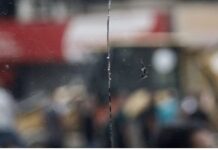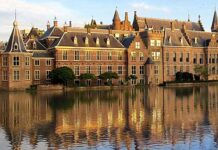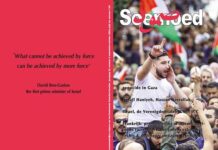Noa Pinto
+972 Magazine / August 15, 2024
Long neglected by the Jerusalem Municipality, Kufr ‘Aqab residents now receive only a few hours of water a week — and the authorities refuse to help.
In the searing heat of summer, Jerusalem’s largest Palestinian neighborhood is facing a major water crisis. Since June, residents of Kufr ‘Aqab have been receiving just 2 to 12 hours of water per week. Their complaints have been redirected from one official to the next, yet no one has provided them with a solution — nor taken responsibility for the problem.
Located within Jerusalem’s northeastern municipal boundary but severed from the rest of the city by the separation wall, Kufr ‘Aqab’s residents have grown accustomed to the systematic neglect they face from the Israeli authorities. But the current crisis is the worst it’s ever been. During the few hours that the water does flow, residents try to do everything they can with it: take showers, do laundry, and clean the house. The rest of the time, they are forced to buy water from private suppliers and store it in containers on the roofs of their apartment blocks.
“We have hospitals, nurseries, and schools in the area,” Iyad Sanduka, a member of the neighborhood’s residents’ committee, told +972 Magazine and Local Call. “Everyone suffers from the water shortage.”
Despite the fact that the majority of the neighborhood is officially part of Jerusalem, Kufr ‘Aqab doesn’t receive water from the municipal water supplier, Hagihon. Instead, like Palestinian communities across the occupied West Bank, water is provided by the Palestinian Water Authority (PWA) — an arm of the Ramallah-based Palestinian Authority (PA) — which purchases it from the Israeli national water company, Mekorot.
This is symptomatic of Israel’s system of water apartheid in the occupied territories: Palestinians in the West Bank and Gaza are denied control of the aquifers under their feet, and must instead buy the water back in limited quantities from Israel. While Israelis have access to an average of 300 liters of water per day, Palestinians in the West Bank enjoy only 80 liters — 20 liters less than the World Health Organization’s recommended daily quantity. For Palestinians in Gaza, it is currently as low as 3 liters.
According to the PWA, the current shortage in Kufr ‘Aqab is the fault of Mekorot, which it says has reduced the amount of water it supplies to the neighborhood, as well as to other parts of the West Bank. Mekorot denies that it has reduced its provision. Nobody seems willing or able to resolve the issue.
“We contacted the authorities responsible for the water supply: the Palestinian Water Authority, the Jerusalem Municipality, and the Kufr ‘Aqab Municipality,” Sanduka said, referring to the PA-run body in charge of the part of the neighborhood that wasn’t annexed to Israel. “Each one places the blame on the others.”
Indeed, in response to requests from +972 and Local Call for comment, Hagihon and the Israeli Water Authority, which administers Mekorot, both said that the situation in Kufr ‘Aqab is the responsibility of the PWA; the Jerusalem Municipality blamed the “irresponsible conduct of the Palestinian Authority” but claimed it is exploring solutions that it warned may take “months to years” to implement. The PWA did not reply by the time of this article’s publication.
In recent weeks, residents have held four demonstrations in front of the PWA’s offices in the neighborhood, seeing it as duty-bound to help them, even if Mekorot has reduced its supply. Israeli activists from the anti-occupation group Free Jerusalem also held two protests in front of the home of Jerusalem Mayor Moshe Leon, in the western part of the city. In early July, the issue was discussed in the Knesset. More than a month later, however, the water supply in Kufr ‘Aqab has not changed.
“We fall under the jurisdiction of the Jerusalem Municipality; it shouldn’t be our problem if there are political issues between the governments regarding the water supply,” Sanduka said. “It’s their responsibility.”
‘There’s nowhere else we can live’
Prior to 1967, residents of Kufr ‘Aqab did not consider themselves to be Jerusalemites. What used to be a small agricultural village was swallowed up into the city after Israel occupied East Jerusalem and vastly expanded the municipal boundaries. One of Israel’s considerations in this process was the desire to include Qalandiya Airport (now known as Atarot) and the surrounding area within the city’s northern limits. The airport has long since stopped operating, but it sealed the fate of Kufr ‘Aqab as part of “unified” Jerusalem.
However, with the construction of the separation barrier in the early 2000s, whose route was designed to include Jewish settlements and exclude Palestinian neighborhoods in an act of demographic engineering, Kufr ‘Aqab and the nearby Shuafat refugee camp were severed from the rest of the city. Residents of these neighborhoods are now forced to cross an Israeli military checkpoint every time they wish to enter the area inside the wall.
Since then, the Jerusalem Municipality has barely given a second thought to the areas cut off by the wall, even though they officially remain under its remit. At the same time, in accordance with the Oslo Accords — which were supposed to be a temporary arrangement but remain in force — the Palestinian Authority is forbidden to operate inside Jerusalem. What has resulted is a no man’s land, with almost no municipal services and no authority that takes full responsibility for residents’ well-being.
Throughout occupied East Jerusalem, Palestinians suffer from a severe housing crisis which has intensified in recent years, due to discriminatory planning policies that make building permits extremely difficult to obtain; when residents build without them, the authorities demolish their homes. Yet if they leave the city, Palestinian Jerusalemites — most of whom are not Israeli citizens — face the risk that the Israeli authorities will revoke residency status.
The lack of enforcement in the areas cut off by the wall has therefore created a kind of refuge: Palestinians from other parts of the city have flocked to Kufr ‘Aqab and Shuafat refugee camp in their tens of thousands, building vertically with few restrictions. Today, the combined population of the Jerusalem neighborhoods cut off by the wall is estimated at around 150,000, representing about a third of the city’s Palestinian residents.
“We have to live in these areas,” Hassan Halawani, a member of Kufr ‘Aqab’s residents’ committee, told +972 and Local Call. “There’s nowhere else you can live in Jerusalem. An apartment that costs NIS 3.5 million [around $940,000] in another area of the city costs NIS 350,000 [around $94,000] here. There are no building permits in East Jerusalem, so there is no other solution.”
‘It’s getting worse by the day’
Since the onset of Kufr ‘Aqab’s water crisis this summer, residents have been forced to buy from private suppliers at extremely high prices: a single 1,500-liter tank costs around $150. And because of the cost of pumping water to the roof, the price per tank increases the taller the building is.
“There are sick people here, people who live on social security benefits,” Halawani explained. “They receive an allowance of NIS 3,500 a month, of which NIS 1,500 is spent only on water.”
There are other hazards, too. Given the absence of any municipal authority to supervise construction of the high-rise towers common in Kufr ‘Aqab, the weight of the tanks poses a real safety risk. Residents are also concerned about the quality of the water they’re buying, and the possibility that it could be dangerous to their health. “Our children drink water that we don’t know where it came from,” Samir Abu Khalaf, another member of the residents’ committee, told +972 and Local Call. “The tanks also stand in the sun all day.”
On July 7, residents filed a petition to Israel’s High Court of Justice together with the left-wing Israeli NGOs Ir Amim and the Association for Civil Rights in Israel, seeking to find an immediate solution. The Haifa-based Palestinian civil rights group Adalah is planning to submit another petition with residents on the issue next week.
In the meantime, residents warn that life in East Jerusalem’s last refuge will soon become impossible. “The crisis is getting worse by the day, with fewer and fewer hours that the water is supplied,” Halawani said. “Water is life; without it, there is no life. We need a solution.”
Noa Pinto is a Jerusalem-based activist and the social media manager for Local Call












